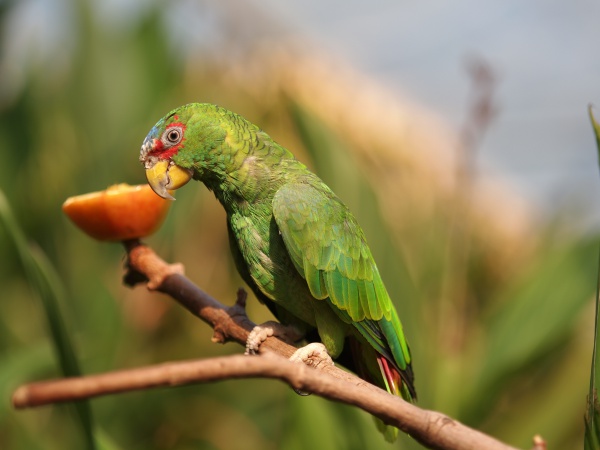Facts About White-fronted amazon
The white-fronted Amazon, also known as the white-fronted parrot or spectacled Amazon parrot, is a captivating bird native to Central America. Renowned for their remarkable ability to imitate sounds, these parrots are a delight to both watch and listen to. They typically live for around 40 years and are the smallest members of the Amazon parrot family, measuring approximately 25 cm in length.
Their striking appearance features green feathers with blue accents on their wings, a distinctive white patch on their forehead, and a splash of red around their eyes. Behind the white patch, you'll find additional blue coloring. Males and females can be distinguished by their distinct coloring patterns.
There are three subspecies of the white-fronted Amazon, each exhibiting slight variations in color and size. These birds thrive in a range of habitats across Central America and Mexico, from lush rainforests to arid cactus savannahs. They are social creatures, often seen in small flocks, and are quite approachable.
White-fronted Amazons nest in tree cavities, laying three to four eggs in the spring. The eggs are incubated for about 26 days, and the chicks fledge after approximately 60 days. Interestingly, some populations have been observed in southern Texas, southern California, and Puerto Rico. These are likely escapees or birds from introduced breeding populations.

 Guatemala
Guatemala